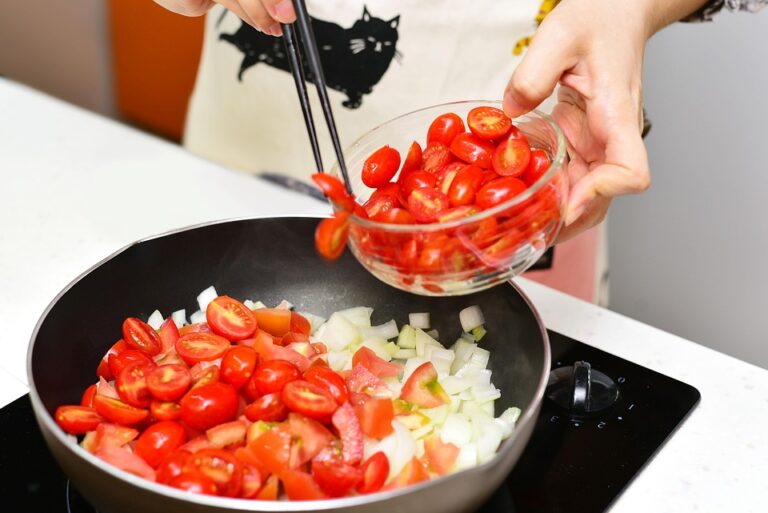Mastering the Art of Sautéing: Delicious Recipes to Elevate Your Cooking Skills
Sautéing is not just a cooking technique; it’s a culinary art that has been refined over centuries. Whether you’re a novice or a seasoned chef, mastering sautéing can truly elevate your cooking skills. In this article, we’ll delve into the intricacies of sautéing, provide some delicious recipes, and highlight the health benefits of this versatile cooking method.
What is Sautéing?
Sautéing is a cooking technique that involves cooking food quickly in a small amount of fat or oil over relatively high heat. The word "sauté" comes from the French word meaning "to jump," which is indicative of how food moves in the pan as it cooks. This method is ideal for vegetables, meats, and seafood, allowing for a quick caramelization that enhances flavor and texture.
The Benefits of Sautéing
Sautéing may appear simple, but this technique offers numerous advantages, making it an essential skill for any home cook:
- Speed: Dishes can be prepared in a matter of minutes.
- Nutrition Retention: Short cooking times help retain vitamins and minerals typically lost during longer cooking methods.
- Flavor Development: Sautéing fosters browning, which creates complex flavors through the Maillard reaction—often leading to delicious results.
- Versatility: From hearty main courses to delightful side dishes, sautéing can cater to a wide range of culinary creations.
According to a survey conducted by the Food Institute, nearly 67% of American households prefer home-cooked meals, emphasizing the popularity and importance of efficient cooking methods like sautéing.
Essential Tools for Sautéing
Before you hit the kitchen, gather the necessary tools:
- Skillet or Frying Pan: A heavy-bottomed skillet helps distribute heat evenly.
- Spatula or Wooden Spoon: For stirring and flipping the ingredients.
- High-Quality Oil: Choose oils with high smoke points, such as canola, grapeseed, or olive oil.
Mastering the Technique
To become proficient at sautéing, follow these fundamental steps:
- Preheat the Pan: A hot pan is essential for proper sautéing. Preheat for about 1-2 minutes over medium-high heat.
- Add Oil: Add a thin layer of oil to the pan. Wait for it to shimmer, indicating it’s hot enough.
- Know When to Add Ingredients: Add food in small batches. Overcrowding can lower the pan’s temperature and lead to steaming instead of sautéing.
- Stir Often: Regular stirring ensures even cooking and golden-browning of food.
- Cook to Perfection: Aim for a crisp texture with vibrant colors. Vegetables should have a slight bite, while proteins should develop a rich crust.
Flavorful Recipes to Try
Here are three delicious sautéing recipes that will not only hone your skills but also tantalize your taste buds.
1. Sautéed Garlic Spinach
Ingredients:
- 1 pound fresh spinach
- 3 cloves garlic, minced
- 2 tablespoons olive oil
- Salt and pepper to taste
- A squeeze of lemon juice
Instructions:
- Heat olive oil in a large skillet over medium heat.
- Add minced garlic and sauté for about 30 seconds, until fragrant.
- Add spinach and a pinch of salt. Cook until it wilts, about 2-3 minutes.
- Finish with a squeeze of lemon juice before serving.

Alt Text: Sautéed Garlic Spinach – Mastering the Art of Sautéing
2. Chicken Breast Sauté with Herbs
Ingredients:
- 2 boneless chicken breasts, cut into thin strips
- 1 tablespoon mixed herbs (thyme, rosemary, and parsley)
- 2 tablespoons butter
- Salt and pepper to taste
- ¼ cup chicken broth
Instructions:
- In a skillet, melt butter over medium-high heat.
- Add chicken strips, season with salt, pepper, and herbs. Sauté for about 5-6 minutes until browned.
- Pour in chicken broth and let simmer for an additional 5 minutes.

Alt Text: Chicken Breast Sauté with Herbs
3. Sautéed Seasonal Vegetables
Ingredients:
- 2 cups mixed seasonal vegetables (bell peppers, zucchini, cherry tomatoes)
- 3 tablespoons olive oil
- Salt and pepper to taste
- Balsamic vinegar for finishing
Instructions:
- Heat olive oil in a large skillet over medium-high heat.
- Add mixed vegetables; season with salt and pepper.
- Sauté for about 7-10 minutes until vegetables are tender and caramelized.
- Drizzle with balsamic vinegar before serving.
Conclusion
Sautéing is an uncomplicated yet sophisticated cooking method that can transform everyday ingredients into mouthwatering dishes. With the right techniques and a few delicious recipes, you can master this art and impress your family and friends.
For those looking to dive deeper into cooking skills, consider checking out our articles on Essential Cooking Techniques and Healthy Cooking Tips. Additionally, you can visit The Culinary Institute of America for further insights on professional cooking methods.
By incorporating sautéing into your repertoire, you can not only enhance your culinary skills but also create sumptuous meals that are well-balanced in both flavor and nutrition.
Disclaimer: Buzzo.live does not take responsibility for the accuracy or completeness of the content provided in this article. It is not a professional website or a consulting service, and readers are encouraged to seek professional advice where necessary.


